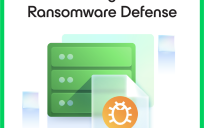 Aging in Place (AIP) is a fairly recent phrase that refers to a common rite of passage in many cultures. Many of us know of societies in which elders are not only revered, but do not age outside of the immediate family circle. These multi-generational homes (whether rented or owned) shelter people from cradle to death and provide a uniquely grounded solace as they age. Many of today’s children are mobile and free to pursue opportunities all over; parents are left with empty nests and golden years to fulfill.
Aging in Place (AIP) is a fairly recent phrase that refers to a common rite of passage in many cultures. Many of us know of societies in which elders are not only revered, but do not age outside of the immediate family circle. These multi-generational homes (whether rented or owned) shelter people from cradle to death and provide a uniquely grounded solace as they age. Many of today’s children are mobile and free to pursue opportunities all over; parents are left with empty nests and golden years to fulfill.
The American Association of Retired Persons (AARP) is a strong advocate for Aging in Place and supports the use of technology to enhance the experience for the aging parent(s) and the caregiver. Digital Inclusion brings together access to affordable internet and devices (such as computers, tablets, smartphones and tablets) and help with using them.
5 Benefits of Aging in Place
One of life’s major dilemmas is whether or when to place aging parents in facilities to be cared for and monitored. Children who live a distance away or have many obligations face serious life adjustments. Often, families make every effort to keep parents living at home, on their own. There are many benefits to this, including:
- Choice. We all want to feel that we are free to exercise our options and have control over our own lives.
- Familiarity. Friends, shops, neighborhoods and regular activities give a feeling of being a part of life.
- Home. The sense of “refuge and security” is a major component of one’s feeling of safety and peace.
- Independence. Feeling free to come and go, use and place things where one wants is important to the self.
- Health. A person’s health encompasses the body, the emotions and the mind. Satisfaction improves overall well-being.
Better access to technology and connectivity can allow seniors to access telemedicine, use IoT and stay in touch while maintaining independence longer in the home of choice.
Explosion of U.S. Elders by 2030
By the year 2030, people over the age of 65 are expected to outnumber children, at 78 million older adults versus 76.7 million children under the age of 18. This is a first in United States history, according to demographer Jonathan Vespa of the U.S. Census Bureau (September 2018). Over 34 million caregivers have provided unpaid care for at least one adult aged 50 and over in the United States (National Alliance for Caregiving/AARP, 2015). At the time of this study, nearly half of the recipients of this elder care lived in their own homes. For the caregiver, the impacts on personal time and professional life can be significant, with emotional distress on the caregiver being most acute for those who live some distance away.
The Internet of Things (IoT) and Aging in Place
AARP believes that technology can offer many ways to maintain independence and increase the peace of mind of the caregiver. In an article entitled “New Technology Could Allow You or Your Parents to Age at Home,” writer Sally Abrams offers the real-life story of a man who used a cellular Lively/GreatCall system to monitor his parents and keep in touch with them as he worked. The system he used allowed him to keep an eye on when they accessed foods and medication, and he could check in via a website at any time. When a fall or other emergency is detected, both he and emergency services are notified. GPS tracking allowed him to feel more confident about his parents’ whereabouts.
The Internet of Things (IoT) is a series of network-connected devices that can share information and perform specific functions via remote access over the web. For example, cloud-accessible printers, webcams and home monitoring services are IoT. Before there was an IoT, there was the iconic Life Alert (“I’ve fallen and I can’t get up!”) medical monitoring service, which used POTS (plain old telephone service). Believe it or not, Life Alert still exists, super-powered by fast, advanced communications technology. A number of other available services keep track of biometric readings, offer medication reminders and connect to emergency response teams.
How Digital Equity and Telemedicine permit Aging in Place
Digital Equity refers to a level playing field of access to quality, affordable high-speed internet service. It is a cornerstone of the entire Digital Inclusion rubric, which includes unfettered access to hardware, training and coaching to enable greater personal, social and professional fulfillment. That said, only robust and stable connections are reliable enough to send and receive data properly and consistently. Telemedicine, which can encompass activities from video doctor visits to remote monitoring and testing to surgeries, requires reliable connectivity.
Policy Fellow and GovLoop Contributor Michael Steinberg points out that cloud technology elevates more than record keeping and data management. Also important, he believes that wearable IoT and biometric devices for monitoring and diagnostics can reduce office visits. Also, caregivers can make fewer trips to and from medical facilities. This means loved ones have less need for work absences and there is more leisure time for everyone. Further, Steinberg recommends vigilance against cyberthreats and employing best practices for cybersecurity. Agencies, family and medical personnel can stay in touch with independent seniors through webcams, face to face communications, voice calls, email and messaging.
Aging in Place means being more empowered and helps seniors find greater joy in everyday life. But people with temporary or permanent functional needs and mobility issues can also use technology in similar ways. To support “Aging in Place” means being part of a movement that potentially benefits everyone, in many ways. For advocates, AARP’s Aging in Place – A Toolkit for Local Governments is a valuable resource.
Anita Davis is part of the GovLoop Featured Contributor program, where we feature articles by government voices from all across the country (and world!). To see more Featured Contributor posts, click here.





Leave a Reply
You must be logged in to post a comment.